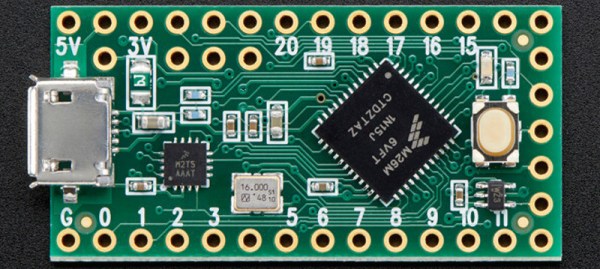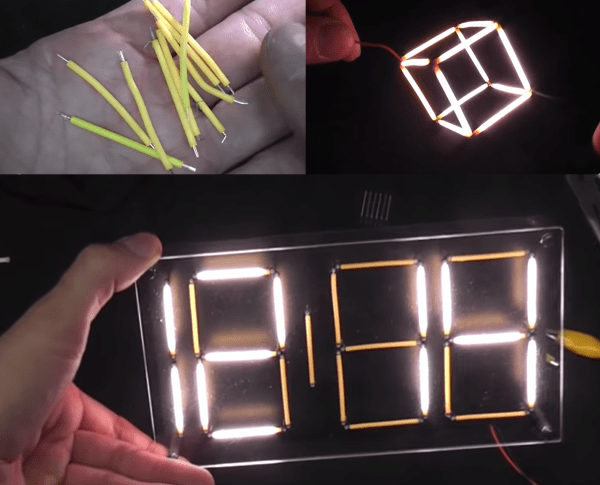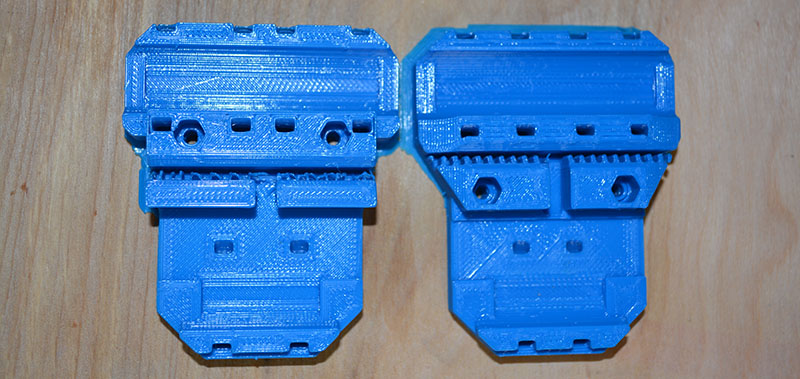This week we’re giving away 125 Teensy-LC Boards. You’ve sat on the sidelines long enough. Time to write down your Hackaday Prize idea and get it entered!
It isn’t just the big prize (a trip into space) on the line. Each week we’re giving away things to help your build. Below you can see the 50 projects which won a LightBlue Bean from last week’s giveaway. This week it’s a huge number of Teensy-LC boards going out to those who need them. These little wonders pack a real punch, with a 48 MHz ARM Cortex-M0+ that has 62K of flash, 8k of RAM, plenty of IO and a 12-bit analog module for both input and output! You’ll also be eligible for each of the future weekly giveaways… we’re distributing $50,000 in prizes to hundreds of projects over 17-weeks!
Entering is easy. Write down your idea to help solve a problem faced by a wide range of people. Start fleshing out your build plan. Pictures are a huge help, even if they’re just a hand-drawn sketch on some paper! Your best bet at getting recognized for a giveaway is to post a new project log which mentions how you would add this Teensy board to your creation.
Last Week’s 50 Winners of a LightBlue Bean

Congratulations to these 50 projects who were selected as winners from last week. You will receive a LightBlue Bean which combines Bluetooth LE with an ATmega328 in a nice little package ready for prototyping. Don’t forget to post pictures and information about what you build with these little wonders!
Each project creator will find info on redeeming their prize as a message on Hackaday.io.
- A Wireless I2C Bridge for Amateur Radio Use
- An IOT Device That Tells Dad the Stove is Off.
- Automatic Plant Watering System
- Bicycle Computer
- BLE Intertial Measurement Unit
- BloodWatch
- Braille Computer
- BSU – BS Free USB
- Chocometer
- CoreConduit: Automated Garden Controller System
- CTRL-BA
- DayBreaker
- Density Altitude Gauge
- Dusty – The smart dustbin
- ESPLux – Smarts for your downlights
- FacilTempo – weather station
- Gas Sensor For Emergency Workers
- HydroPWNics
- Indoor air pollution reduction
- Inexpensive Water Quality Testing System
- Instant Traffic Collision Notifier
- LiteHouse
- Low Cost Wireless Home Automation and Security
- Low-noise, Easy-to-use Analog Data Logger: SiGZiG
- LTA based Farm Monitoring Solution
- Mesh network based Internet access
- MiCubes are your cubes!
- NIRGM – Non-Invasive NIR Glucose Meter
- Open Sensor Array
- Personal Medical Assistant
- PixiFlood
- Portable tiny IoT device solving general problem
- Power Monitor
- Reagent Robot
- Rice Ridiculously Automated Dorm (RRAD!)
- SciPIo
- Smartphone Tricorder
- Squirco Smart Home System – Sensor Network
- StormSafe
- Teleimperium
- the HOT project
- The ProReg – Fuel Monitoring System
- The Smart Garden
- Theme Park of Everyday Installation
- Timstock Slim – a tool for the autistic
- Very Expensive Tool + Green Lasers
- Very thin (but touch type-able) USB keyboard !
- Weather Controlled SmartWindow
- Wireless Batteryless Mouse
- Your satellite devkit and launch













































